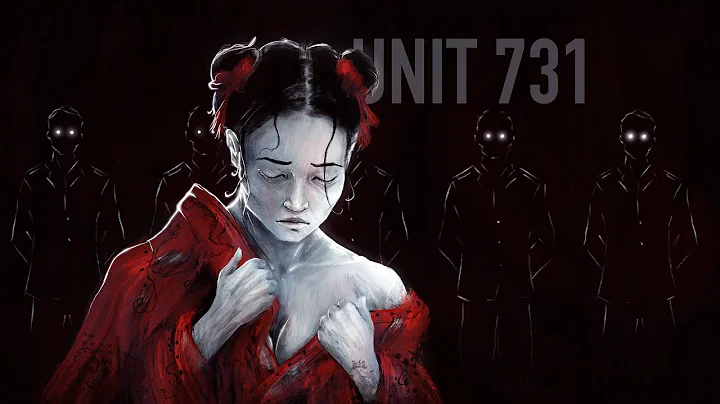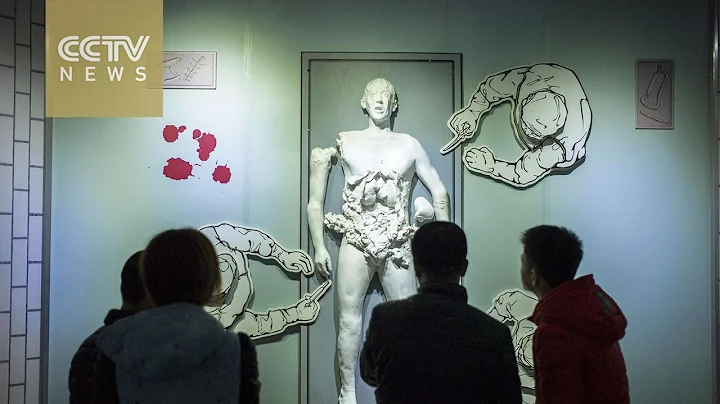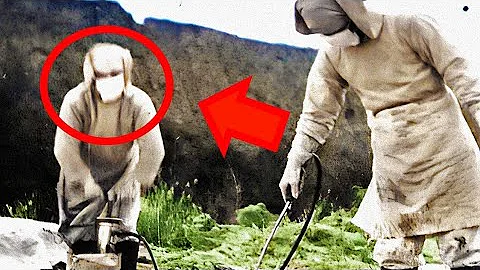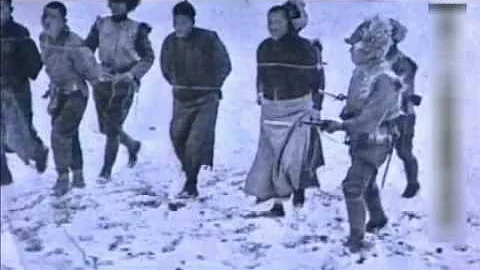文/王国栋
He is the notorious head of the 731 unit of the Kwantung Army in Japan. He organized and led the ministry during the War of Resistance Against Japan, in the name of researching disease prevention and drinking water purification, and cruel use of Chinese and North Korean prisoners of war and Chinese people. In the experiments of living biological weapons and chemical weapons, more than 10,000 victims were killed, and as many as 3,000 named victims can be verified. And the number of Chinese soldiers killed and injured by the bacterial biological and chemical weapons developed by Unit 731 is even more numerous, and its harm has been postponed to this day. However, it is incredible that this executioner war criminal with the rank of Japanese lieutenant general and his hands covered with Chinese blood, escaped the post-war trial after the victory of the War of Resistance against Japan, and died of throat cancer in 1959. The most despicable and shameless Japanese general in the history of human warfare is Kwantung Army Minister (external name) Shiro Ishii.
Ishii Shiro was born on June 25, 1892 in a wealthy and powerful family in Chiba Prefecture, Japan. He is talented and clever. It is said that when he was in elementary school, he could recite a whole textbook in one night. In our Chinese proverb, he has the ability to remember.

Ishii Shiro chose to study medicine as an adult, and entered the Kyoto Imperial University School of Medicine in 1916 and graduated in 1920. Ishii Shiro was very conceited and declared that he could be the first general in Japanese history and become the laughing stock of his colleagues. why? Because according to the ranks of the Japanese army, the highest position of a military doctor is the chief medical officer, and the rank is lieutenant general. The Japanese military rank promotion regulations stipulate that no outstanding combat achievements cannot be promoted to a general. Therefore, it is impossible for a military doctor to be promoted to the rank of general. Ishii Shiro knows this rule well, but he has his own reason, which is to promote his biochemical and bacterial weapons to the high level of the Japanese army as a merit of promotion. Japan is a nation that advocates Bushido, and Ishii Shiro's side door is naturally unlikely to be recognized by the high-levels, and it is ashamed.
In 1928, Shiro Ishii’s biochemical and bacterial strategy was supported by Osamu Nagata, the first general in the army province. Because Japan was in conflict with Russia at that time, Japan and Russia, which had a small land area and lacked strategic resources, were at a disadvantage in the battle. Nagata Tetsuyama was very interested in the kind of strategic weapons that Shiro Ishii boasted of killing thousands of opponents by waving his hands, although he also knew that such biochemical and bacterial weapons were banned by the 1925 Geneva Conference on Disarmament. In order to help Shiro Ishii develop biochemical and bacterial weapons, Nagata Tetsuyama sent him to Germany to secretly investigate the development of bacterial weapons in Germany. After returning to China, Nagata Tetsuyama promoted Ishii Shiro to Shao Zuo and appointed him as an instructor in the Epidemic Prevention Department of the Army Military Medical School to prepare for the development of biochemical and bacterial weapons.

In August 1932, in the Army Medical School in Wakamatsu-cho, Tokyo, the so-called "epidemic prevention laboratory" was finally established. Although it was located in the basement of the Epidemic Prevention Department and was small in scale, Shijing Shiro had only five assistants, but it was the prototype of Shijing Shiro’s "Ogre Cave". In order to support Ishii Shiro's research, the Japanese War Department even ordered: "Meet Ishii Shiro's needs with material and reputation." Approved by the Japanese Army Staff Headquarters, 200,000 yen was allocated in a secret account to Shiro Ishii’s research team for military expenses. The 200,000 yen at that time was higher than the military expenditure of a division. The Japanese Ministry of the Army had paid for the development of biochemical and bacterial weapons.
In August 1933, with the approval of the then Japanese Secretary of the Army Sadao Araki, Shiro Ishii set up a secret bacterial research base in Xuanhua Street and the intersection in northeast China, and began to use Chinese and North Korean civilians to do in vivo experiments. This infamous germ force was named "The Troop", and Ishii Shiro called himself "Captain Togo" for the purpose of commemorating Marshal Togo Heihachiro, the Japanese god of war, whom he admired very much. In addition to the tragic and in vivo experiments conducted by the "Dongxiang Troops", they also conducted a live frostbite experiment to verify the cold tolerance of the Japanese soldiers in the battle with the Russian army in freezing Siberia. Judging from the information disclosed by Japanese scholars, the "Dongxiang Army" has verified that humans’ cold tolerance limit and the best treatment method after frostbite is immersion in 37 degrees of water at the cost of freezing to death and freezing hundreds of Chinese civilians. result. And those Chinese civilians who died as a result of the experiment,Was thrown into a crematorium to destroy the body.

In the autumn of 1934, Shiro Ishii’s "Dongxiang Force" was in crisis. First, 12 Chinese "experiments" headed by Wang Ziyang successfully escaped from the institute. Then this laboratory was repeatedly attacked by anti-Japanese coalition forces led by General Zhao Shangzhi. In order not to reveal this secret Japanese research project. Ishii Shiro applied to his superiors to move the research institute to the southern branch of the Harbin Japanese Army Hospital, and changed its external name to Kwantung Army, internal number 731. Ishii Shiro served as the head of the department and was promoted to the rank of the army chief.
In 1939, after more than two years of continuous expansion, Unit 731 became a full-staffed arsenal of 2,600 people, equipped with a lieutenant general and four major generals in advanced biochemical and bacterial weapons. Ishii Shiro also won the fourth level of personal merit because he successfully threw 22.5 kg of salmonella and typhoid bacteria at the enemy in the battle between Japan and the Soviet-Mongolian coalition forces, causing huge damage to the Soviet-Mongolian coalition forces.
From July 1940 to December 1941, Unit 731 airdropped bacterial weapons in Zhejiang, Hunan and other places in China, causing heavy losses to Chinese anti-Japanese soldiers and civilians.

In the battle of Zhejiang and Jiangxi in May 1942, Unit 731 distributed steamed buns infused with enterotyphoid and paratyphoid bacteria to more than 3,000 hungry Chinese prisoners of war. The prisoner of war infected with the bacterial virus was released. This vicious conspiracy directly led to the death of tens of thousands of Chinese soldiers and civilians, and millions of people fled the disaster area to become refugees. Afterwards, Troop 731 triumphantly wrote in the results report: "As a result of the on-site investigation by the dispatched team, the most effective infectious disease is the paratyphoid bacteria."
In 1944, Ishii Shiro. When the 731 unit was in a frenzy of bioproduction and bacterial weapons, its subordinates found evidence of Ishii Shiro’s embezzlement of public funds. The army base camp sent it back to China for investigation. In March 1945, in order to save the defeat, the army base camp transferred Ishii Shiro back to 731 as the minister. Shiro Ishii retaliated against Nakazuo, who was investigating and exposing his corruption, and transferred him to the Pacific battlefield. As a result, Nakaruko was killed within a month.

On August 8, 1945, Shijing Shiro ordered Unit 731 to prepare several tons of bacteria and viruses to be released to various areas of the Soviet Union. In August and September, 1.5 million Soviet Red Army broke through the Kwantung Army's defense line and attacked. The Kwantung Army Headquarters ordered Ishii Shiro to organize forces to destroy all evidence. Ishii Shiro shed tears and said to Shigeharu Asoe, a senior staff officer of the Kwantung Army Command who delivered the order: "Can't the research materials be brought back?" "No," Shigeharu is sure. Say.
On August 10, 1945, after destroying most of the evidence of Unit 731, Shiro Ishii took all the key members of Unit 731 and flew back to Japan on a special plane provided by the Kwantung Army. These backbone members of Unit 731 received orders from the highest level to shut up forever and bring secrets into the grave.
After Japan announced its unconditional surrender, in order to avoid the trial, Shiro Ishii asked his subordinates to contact the Americans and exchange research results of Unit 731 in exchange for the pardon of related war criminals of Unit 731. The Americans shamelessly accepted the exchange, which caused the 731 soldiers including Ishii Shiro to escape trial.

In 1959, Ishii Shiro died of throat cancer in Tokyo at the age of 67.
According to the research and textual research of Chinese and Japanese scholars in recent years, Shijing Shiro and his subordinate Unit 731 used Chinese and Korean civilian prisoners of war to conduct living biochemical and bacterial weapons experiments from 1933 to 1945, resulting in more than 10,000 deaths. There were as many as 3,000 victims with names and surnames (documents recorded that the Japanese army was too late to destroy them). And because of the biochemical and bacterial weapons used in its production, there are countless people killed and injured, and its harm continues to this day. All mankind should condemn this vile and shameless criminal act of exterminating humanity!





















